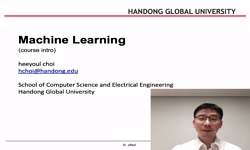In this study, a modified Artificial Neural Network (ANN) and Support Vector Regression (SVR) with three different optimization algorithms (Genetic, Salp Swarm and Grasshopper) were used to establish an accurate and easy-to-use module to predict the l...
http://chineseinput.net/에서 pinyin(병음)방식으로 중국어를 변환할 수 있습니다.
변환된 중국어를 복사하여 사용하시면 됩니다.
- 中文 을 입력하시려면 zhongwen을 입력하시고 space를누르시면됩니다.
- 北京 을 입력하시려면 beijing을 입력하시고 space를 누르시면 됩니다.



Modified Artificial Neural Networks and Support Vector Regression to Predict Lateral Pressure Exerted by Fresh Concrete on Formwork
한글로보기https://www.riss.kr/link?id=A108359253
-
저자
Amirreza Kandiri (School of Civil Engineering, University College Dublin, Belfield, Dublin 4, Ireland) ; Pshtiwan Shakor (Technical College of Engineering, Sulaimani Polytechnic University, Sulaymaniyah, 46001, Iraq) ; Rawaz Kurda (Department of Highway and Bridge Engineering, Technical Engineering College, Erbil Polytechnic University, Erbil, 44001, Iraq) ; Ahmed Farouk Deifalla (Structural Engineering Department, Structural Engineering and Construction Management, Future University in Egypt, New Cairo, 11835, Egypt)
- 발행기관
- 학술지명
- 권호사항
-
발행연도
2022
-
작성언어
English
-
주제어
ANN ; SVR ; machine learning ; lateral pressure ; mix proportion ; concrete ; formwork
-
등재정보
KCI등재,SCIE,SCOPUS
-
자료형태
학술저널
-
수록면
917-938(22쪽)
- DOI식별코드
- 제공처
- 소장기관
-
0
상세조회 -
0
다운로드
부가정보
다국어 초록 (Multilingual Abstract)
In this study, a modified Artificial Neural Network (ANN) and Support Vector Regression (SVR) with three different optimization algorithms (Genetic, Salp Swarm and Grasshopper) were used to establish an accurate and easy-to-use module to predict the lateral pressure exerted by fresh concrete on formwork based on three main inputs, namely mix proportions (cement content, w/c, coarse aggregates, fine aggregates and admixture agent), casting rate, and height of specimens. The data have been obtained from 30 previously piloted experimental studies (resulted 113 samples). Achieved results for the model including all the input data provide the most excellent prediction of the exerted lateral pressure. Additionally, having different magnitudes of powder volume, aggregate volume and fluid content in the mix exposes different rising and descending in the lateral pressure outcomes. The results indicate that each model has its own advantages and disadvantages; however, the root mean square error values of the SVR models are lower than that of the ANN model. Additionally, the proposed models have been validated and all of them can accurately predict the lateral pressure of fresh concrete on the panel of the formwork.
1 Feys, D., "Why is fresh self-compacting concrete shear thickening?" 39 (39): 510-523, 2009
2 de Brito, J., "The past and future of sustainable concrete : A critical review and new strategies on cement-based materials" 281 : 123558-, 2021
3 Vapnik, V., "The nature of statistical learning theory" Springer science &business media 2013
4 Vapnik, V., "Support vector method for function approximation, regression estimation, and signal processing" 281-287, 1997
5 Brereton, R. G., "Support vector machines for classifcation and regression" 135 (135): 230-267, 2010
6 Mohammed, A., "Soft computing techniques : Systematic multiscale models to predict the compressive strength of HVFA concrete based on mix proportions and curing times" 33 : 101851-, 2021
7 Alam, M. A., "Shear strengthening of reinforced concrete beam using natural fbre reinforced polymer laminates" 162 : 683-696, 2018
8 Shahnewaz, M., "Shear strength of reinforced concrete deep beams–a review with improved model by genetic algorithm and reliability analysis" Elsevier 2020
9 Okamura, H., "Self-compacting high-performance concrete" 19 (19): 50-54, 1997
10 Okamura, H., "Self-compacting high performance concrete" 6 (6): 269-270, 1996
1 Feys, D., "Why is fresh self-compacting concrete shear thickening?" 39 (39): 510-523, 2009
2 de Brito, J., "The past and future of sustainable concrete : A critical review and new strategies on cement-based materials" 281 : 123558-, 2021
3 Vapnik, V., "The nature of statistical learning theory" Springer science &business media 2013
4 Vapnik, V., "Support vector method for function approximation, regression estimation, and signal processing" 281-287, 1997
5 Brereton, R. G., "Support vector machines for classifcation and regression" 135 (135): 230-267, 2010
6 Mohammed, A., "Soft computing techniques : Systematic multiscale models to predict the compressive strength of HVFA concrete based on mix proportions and curing times" 33 : 101851-, 2021
7 Alam, M. A., "Shear strengthening of reinforced concrete beam using natural fbre reinforced polymer laminates" 162 : 683-696, 2018
8 Shahnewaz, M., "Shear strength of reinforced concrete deep beams–a review with improved model by genetic algorithm and reliability analysis" Elsevier 2020
9 Okamura, H., "Self-compacting high-performance concrete" 19 (19): 50-54, 1997
10 Okamura, H., "Self-compacting high performance concrete" 6 (6): 269-270, 1996
11 Mirjalili, S., "Salp Swarm Algorithm : A bio-inspired optimizer for engineering design problems" 114 : 163-191, 2017
12 Lizarazo-Marriaga, J., "Probabilistic modeling to predict fy-ash concrete corrosion initiation" 30 : 101296-, 2020
13 Ramezani, M., "Probabilistic model for fexural strength of carbon nanotube reinforced cement-based materials" 253 : 112748-, 2020
14 Yu, B., "Probabilistic bond strength model for reinforcement bar in concrete" 61 : 103079-, 2020
15 Rodin, S., "Pressure of concrete on formwork" 1 (1): 709-746, 1952
16 Gowripalan, N., "Pressure exerted on formwork by self-compacting concrete at early ages: A review" 15 : e00642-, 2021
17 Shakor, P., "Pressure Exerted on Formwork and Early Age Shrinkage of Self-Compacting Concrete"
18 Kandiri, A., "Prediction of the module of elasticity of green concretes containing ground granulated blast furnace slag using hybridized multi-objective ANN and Salp swarm algorithm" 2 : 2-2, 2021
19 Sun, J., "Prediction of permeability and unconfned compressive strength of pervious concrete using evolved support vector regression" 207 : 440-449, 2019
20 Kang, F., "Prediction of long-term temperature efect in structural health monitoring of concrete dams using support vector machines with Jaya optimizer and salp swarm algorithms" 131 : 60-76, 2019
21 Yuan, Z., "Prediction of concrete compressive strength : Research on hybrid models genetic based algorithms and ANFIS" 67 : 156-163, 2014
22 Behnood, A., "Predicting the compressive strength of silica fume concrete using hybrid artifcial neural network with multiobjective grey wolves" 202 : 54-64, 2018
23 Golafshani, E. M., "Predicting the compressive strength of normal and high-performance concretes using ANN and ANFIS hybridized with Grey Wolf Optimizer" 232 : 117266-, 2020
24 Kandiri, A., "Predicting compressive strength of concrete containing recycled aggregate using modifed ANN with diferent optimization algorithms" 11 (11): 485-, 2021
25 Izadgoshasb, H., "Predicting compressive strength of 3D printed mortar in structural members using machine learning" 11 (11): 10826-, 2021
26 Ahmadi, M., "New empirical approach for determining nominal shear capacity of steel fber reinforced concrete beams" 234 : 117293-, 2020
27 Chandwani, V., "Modeling slump of ready mix concrete using genetic algorithms assisted training of Artifcial Neural Networks" 42 (42): 885-893, 2015
28 Lange DA,, "Modeling formwork pressure of SCC" 2008
29 Kurda, R., "Mix design of concrete : Advanced particle packing model by developing and combining multiple frameworks" 320 : 126218-, 2022
30 Rogers, S. M., "Mechanosensory-induced behavioural gregarization in the desert locust Schistocerca gregaria" 206 (206): 3991-4002, 2003
31 Margallo, M., "Life cycle assessment of technologies for partial dealcoholisation of wines" 2 : 29-39, 2015
32 Suykens, J. A., "Least squares support vector machine classifers" 9 (9): 293-300, 1999
33 Puente, I., "Lateral pressure over formwork on large dimension concrete blocks" 32 (32): 195-206, 2010
34 Almeida Filho, F., "Hardened properties of self-compacting concrete—a statistical approach" 24 (24): 1608-1615, 2010
35 Shakor, P. N., "Glass fbre reinforced concrete use in construction" 2 (2): 2011
36 Shahnewaz, M., "Genetic algorithm for predicting shear strength of steel fber reinforced concrete beam with parameter identifcation and sensitivity analysis" 29 : 101205-, 2020
37 Tabatabaeian, M., "Experimental investigation on efects of hybrid fbers on rheological, mechanical, and durability properties of highstrength SCC" 147 : 497-509, 2017
38 Yan, F., "Evaluation and prediction of bond strength of GFRPbar reinforced concrete using artifcial neural network optimized with genetic algorithm" 161 : 441-452, 2017
39 Kandiri, A., "Estimation of the compressive strength of concretes containing ground granulated blast furnace slag using hybridized multi-objective ANN and salp swarm algorithm" 248 : 118676-, 2020
40 Roussel, N., "Distinct-layer casting of SCC : The mechanical consequences of thixotropy" 38 (38): 624-632, 2008
41 Monteiro, P. J., "Designing concrete mixtures for strength, elastic modulus and fracture energy" 26 (26): 443-452, 1993
42 Velay-Lizancos, M., "Concrete with fne and coarse recycled aggregates : E-modulus evolution, compressive strength and non-destructive testing at early ages" 193 : 323-331, 2018
43 Day, K. W., "Concrete Mix Design, Quality Control and Specifcation" CRC Press 21-27, 2006
44 Lloret, E., "Complex concrete structures : Merging existing casting techniques with digital fabrication" 60 : 40-49, 2015
45 Haron, N. A., "Building cost comparison between conventional and formwork system : A case study of four-storey school buildings in Malaysia" 2 (2): 819-823, 2005
46 Merriam, J., "Atmospheric pressure and gravity" 109 (109): 488-500, 1992
47 Cybenko, G., "Approximation by superpositions of a sigmoidal function. Mathematics of Control" 2 (2): 303-314, 1989
48 Golafshani, E. M., "Application of soft computing methods for predicting the elastic modulus of recycled aggregate concrete" 176 : 1163-1176, 2018
49 Vickers, N. J., "Animal communication: When i’m calling you, will you answer too?" 27 (27): R713-R715, 2017
50 Koehler, E.P., "Aggregates in self-consolidating concrete"
51 Holland, J. H., "Adaptation in natural and artifcial systems: an introductory analysis with applications to biology, control, and artifcial intelligence" MIT Press 1992
52 Sahoo, S., "ANN modeling to study strength loss of fy ash concrete against long term sulphate attack" 5 (5): 24595-24604, 2018
53 Smola, A. J., "A tutorial on support vector regression" 14 (14): 199-222, 2004
54 Boser, B. E., "A training algorithm for optimal margin classifers" 1992
55 Alyamaç, K. E., "A preliminary concrete mix design for SCC with marble powders" 23 (23): 1201-1210, 2009
56 Ovarlez, G., "A physical model for the prediction of lateral stress exerted by self-compacting concrete on formwork" 39 (39): 269-279, 2006
57 Ahmad, M. S., "A novel support vector regression(SVR)model for the prediction of splice strength of the unconfned beam specimens" 248 : 118475-, 2020
58 Pan, Y., "A novel QSPR model for prediction of lower fammability limits of organic compounds based on support vector machine" 168 (168): 962-969, 2009
59 Jahangir, H., "A new and robust hybrid artifcial bee colony algorithm—ANN model for FRP-concrete bond strength evaluation" 257 : 113160-, 2021
60 Farooq, F., "A comparative study of random forest and genetic engineering programming for the prediction of compressive strength of high strength concrete(HSC)" 10 (10): 7330-, 2020
61 Simpson, S. J., "A behavioural analysis of phase change in the desert locust" 74 (74): 461-480, 1999
동일학술지(권/호) 다른 논문
-
Mechanical Properties of Lightweight Aggregate Concrete Reinforced with Various Steel Fibers
- 한국콘크리트학회
- 양근혁
- 2022
- KCI등재,SCIE,SCOPUS
-
- 한국콘크리트학회
- 정호성
- 2022
- KCI등재,SCIE,SCOPUS
-
- 한국콘크리트학회
- Chengbin Yuan
- 2022
- KCI등재,SCIE,SCOPUS
-
- 한국콘크리트학회
- Prabhat Vashistha
- 2022
- KCI등재,SCIE,SCOPUS




 DBpia
DBpia








